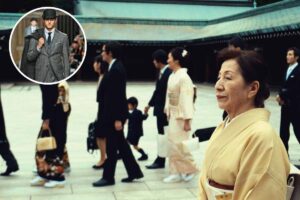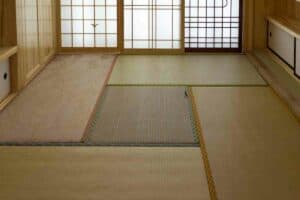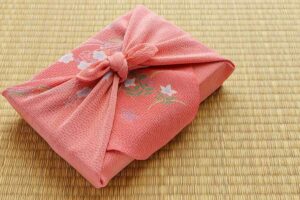A Zabuton is a Japanese sitting or kneeling cushion with a long history dating back to 1192, during the Kamakura period.
“Za” in the word Zabuton means sitting, and “buton” means futon — a traditional Japanese floor mattress made from thick cotton.
Zabutons are made from folding layers of cotton and stuffing them in fabric to create rectangular or square shapes. A typical zabuton measures between 55 and 69 cm.
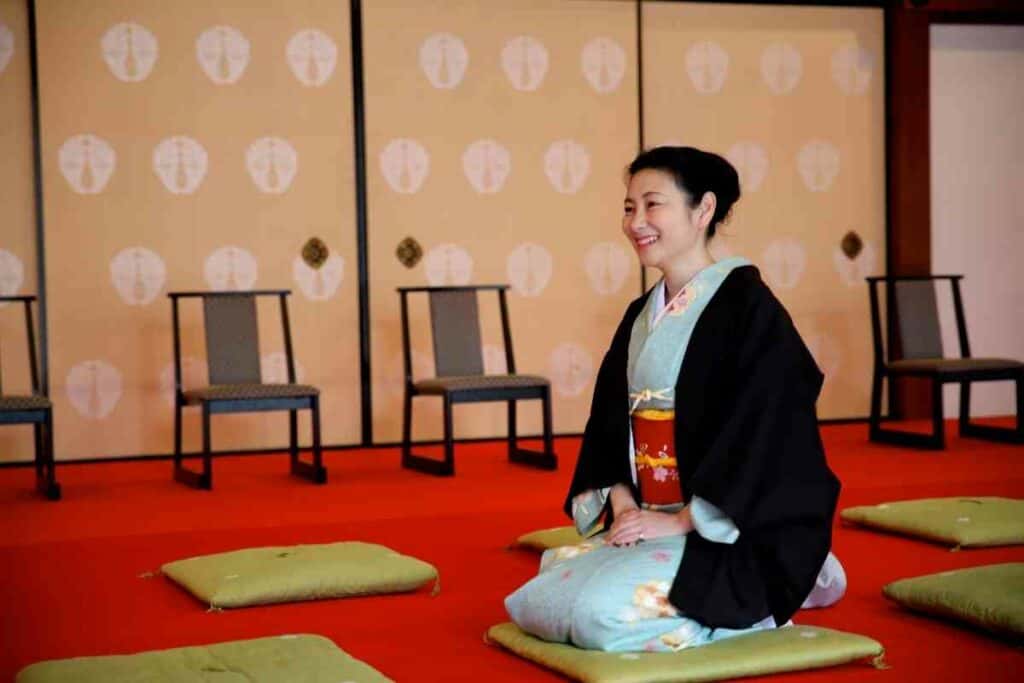
Historically, only Japanese high-status people like the esteemed Buddhist monks and imperial court practitioners enjoyed Zabuton. Some people used them alongside legless and armless traditional Japanese chairs called zaisu.
Once a reserve for only the high-profile Japanese, zabutons are now commonplace across Japan in any setting that requires people to sit on the floor.
And since most traditional Japanese art and craft have meanings, here are eleven things you need to know about Japanese zabutons before buying to ensure you’re using them correctly.
Table of Contents
1. What’s a Japanese Zabuton?
Anyone who’s visited hot spring resorts or traditional Japanese restaurants has likely encountered a zabuton.
Zabutons are popular floor cushions in Japan. They come in different sizes and designs.
The standard size of a zabuton is 55 by 69cm. Most zabutons are rectangular, although you’ll still find them in square shapes.
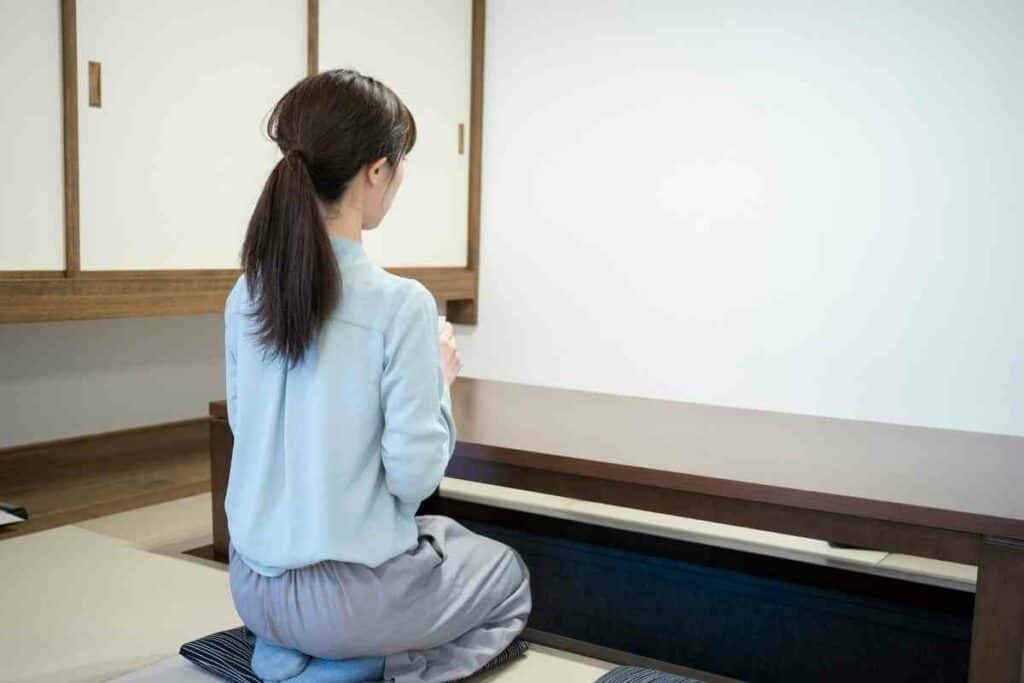
The cushion has more weight at the center to help you maintain a straight and balanced posture.
Some zabutons are made a little firm and bear a tassel at the corner, depending on the intended application.
Initially – Zabutons were used by high-status people in Japan to symbolize power. Today, offering guests a zabuton is a sign of respect and hospitality across Japan.
Zabutons are designed to help you maintain body heat when you sit on them. You can also kneel on them for an extended period during yoga or meditation without feeling fatigued.
According to Japanese traditions, stepping on a zabuton is disrespectful to the host.
2. How to Make a Zabuton
Zabutons are handmade cushions carefully created from pieces of cotton and stuffed inside a fabric.
Zabuton padding is layered by folding these cotton pieces into a desired shape and size.
It’s an art that requires balancing enough cotton at the center where more weight lies. A good zabuton is firm and offers a straight, comfortable posture when you sit or kneel.
Although most zabutons are made from natural fiber like linen and cotton, some people include polyester in the padding.
The cover is always a finely woven fabric, with an infinity knot at the center.
According to Japanese Traditions -The four edges may also have tassels representing good luck. The outer fabric can be any color the artist chooses.
3. How do You Sit on the Floor Using a Zabuton?
There are multiple ways to use Zabuton.
However, traditionally, they were used mainly for sitting. Japanese have a unique way of sitting on the Zabuton called seiza.
Find the Zabuton’s central location and kneel before sitting to achieve a comfortable and relaxing posture.
Sit with your legs tucked underneath and the soles of both feet resting on the floor.
Do not sit on a zabuton with any footwear. It’s also disrespectful to move a zabuton from its location before sitting.
Your backbone should remain straight, with your chest out and the chin straight.
Sitting correctly on a zabuton can prolong your lifespan and offer you the following health benefits:
- It trains your core muscles
- It opens up your knee and ankle joints
- Relaxes your spine muscle and relieves back pain
- Improves your posture
- Improves overall blood circulation in the body
4. Are Zabutons Safe for Small Children?
Instead of playpens or mattresses for children, some Japanese mothers opt for zabutons.
Although the infant may not follow the Zabuton sitting and relaxation rules, it offers adequate space for the child to explore.
You can use a zabuton as a changing or a napping cushion for the child.
However, leaving small children on a zabuton is not advisable. An improper sleeping position on a zabuton can easily choke the child.
5. Other Uses of a Zabuton
The Zabuton was initially intended for sitting on the floor.
However, since zabutons help reduce pressure on the knees, monks, Shinto priests, and other religious leaders used them to enhance comfort during yoga and meditation sessions.
Many people today use zabutons alongside round cushions called zafu during meditations.
The zafu is placed over the Zabuton to enhance longevity during meditation and improve posture.
Yoga practitioners also place the Zabuton under the neck, head, hips, and knees for support during training sessions.
Did You Know? During the traditional Japanese sumo matches, spectators threw zabutons and other tender items at the wrestlers to cheer them. The practice has since been banned in Japanese wrestling matches.
Modern Japanese families now use zabutons as seat cushions.
These are mostly colorful zabutons used to brighten the house and transform seats into comfortable sitting places. A soft zabuton is usually used for the backrest and a firm one for sitting.
Some people also use a zabuton as a pillow to support joints, such as the legs, while sleeping. It helps improve blood circulation and reduce swelling and blood clots when used as leg elevations.
6. What’s the Significance of Zabuton Throwing in Japan?
Zabutons served different purposes in a traditional Japanese wrestling match.
While some people threw them at wrestlers to show passion and cheer them on, the traditional zabuton throwing also symbolized disappointment.
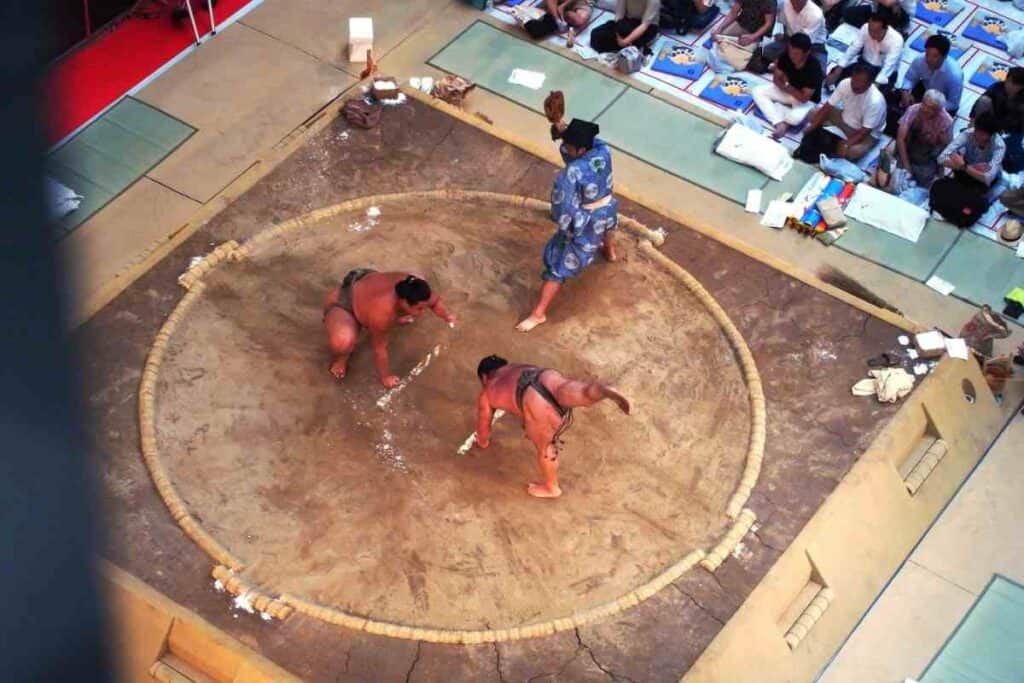
Spectators threw zabutons at a grand champion – Yokozuna, to express disappointment whenever they lost to a junior wrestler during the grand sumo.
The junior wrestler would also receive rounds of zabuton-throwing to encourage him.
7. How to Care for a Zabuton
Zabutons are mostly used on the floor, making them prone to dirt.
Unfortunately, submerging these dense cushions in water or placing them in a machine wash may not be a good idea.
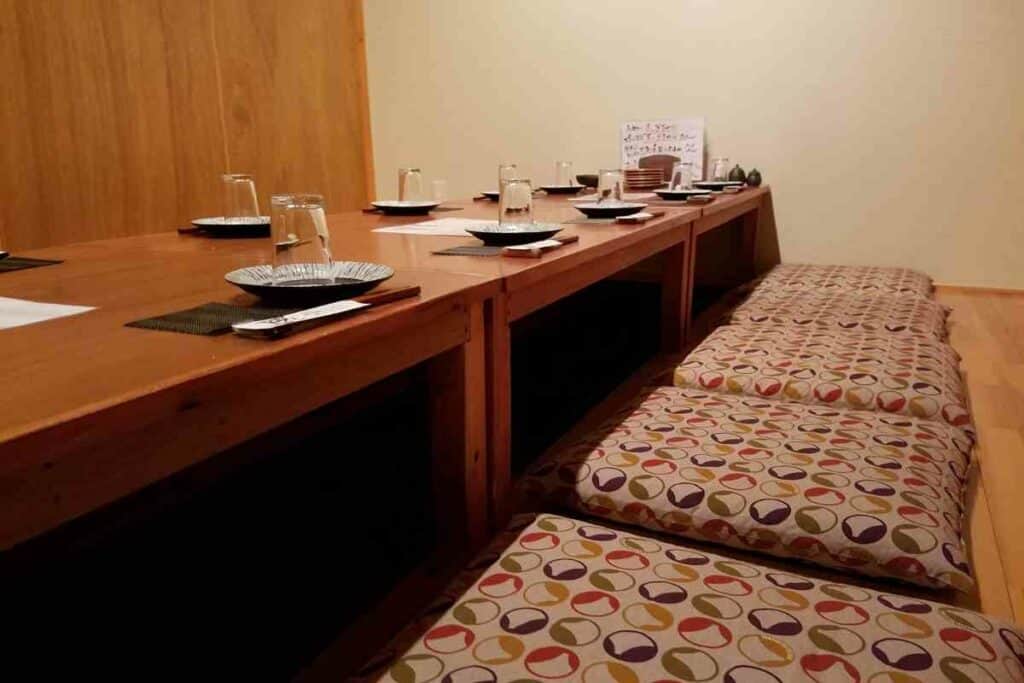
You risk damaging the padding, which constitutes the beauty of a zabuton.
Always a Good Idea – To keep your Zabuton clean and fresh, wipe them off using a damp piece of cloth anytime you spot a stain.
Shake them regularly and air them out in the sun more often.
You may cover them with a thin piece of cloth anytime you put them in the sun to prevent them from fading.
8. Why do Some Zabutons Have Tassels and a Y-Symbol at the Centre?
Every element in Japanese traditional art symbolizes something.
For example, the tassel at the edges of a zabuton may seem insignificant but bear deep meaning according to Japanese culture.
And while tassels are common in many clothes and art objects for the sole purpose of enhancing beauty and taste, tassels represent good luck when used at the edges of a zabuton.
The Japanese also believe tassels keep away harmful energy that may disturb the monks’ and religious teachers’ mindfulness during meditation.
In the middle of a zabuton, there’s also a Y-shaped stitch. It’s called sampotoji by the Japanese. The design feature helps you in orientating the Zabuton.
The tip of the “Y” should face the front when you sit on the cushion. You’ll always find it set in the right direction by the host.
9. What are the Available Zabuton Shapes and Sizes?
The standard size of a traditional Japanese zabuton measures 55cm by 59cm.
The cushions feature a rectangular shape for better kneeling before you sit.
Although there’s no set rule on the size of a zabuton, many traditional Japanese temples had large zabutons measuring 59cm by 69cm for prolonged meditation time.
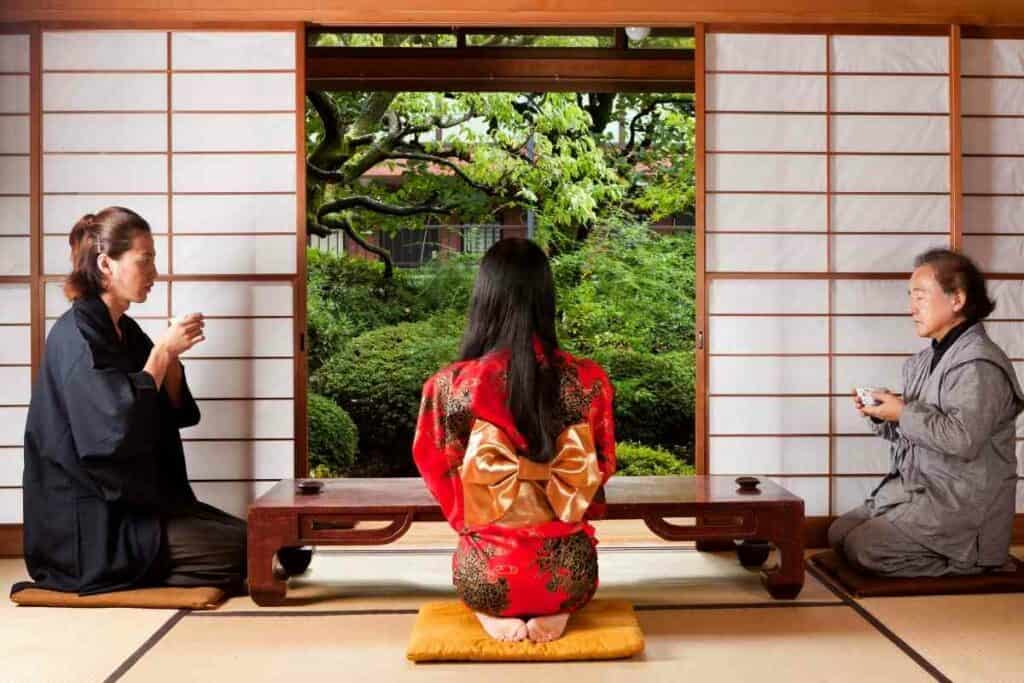
These large zabutons were considered luxurious, thus restricted to high-profile people and for use in specific institutions.
In Most Cases – Modern Japanese homes have manageable zabutons with a standard size of 55cm by 59 cm. However, there are still spacious zabutons that can accommodate almost all sizes.
And since many people, including non-Japanese nations, make zabutons today, you can expect to find larger or smaller sizes than what’s standard in Japan.
Some people even make them in square shapes depending on where and how they intend to use them.
10. Japanese Home Décor Items that Complement Zabuton
Zabutons are traditional Japanese cushions used instead of sofas in most homesteads.
Japan is a nation that aims to protect its cultural heritage and traditional practices, thus, zabutons are still major decor items in many modern Japanese homes.
Zabutons were typically used on the tatami mats by the Japanese.
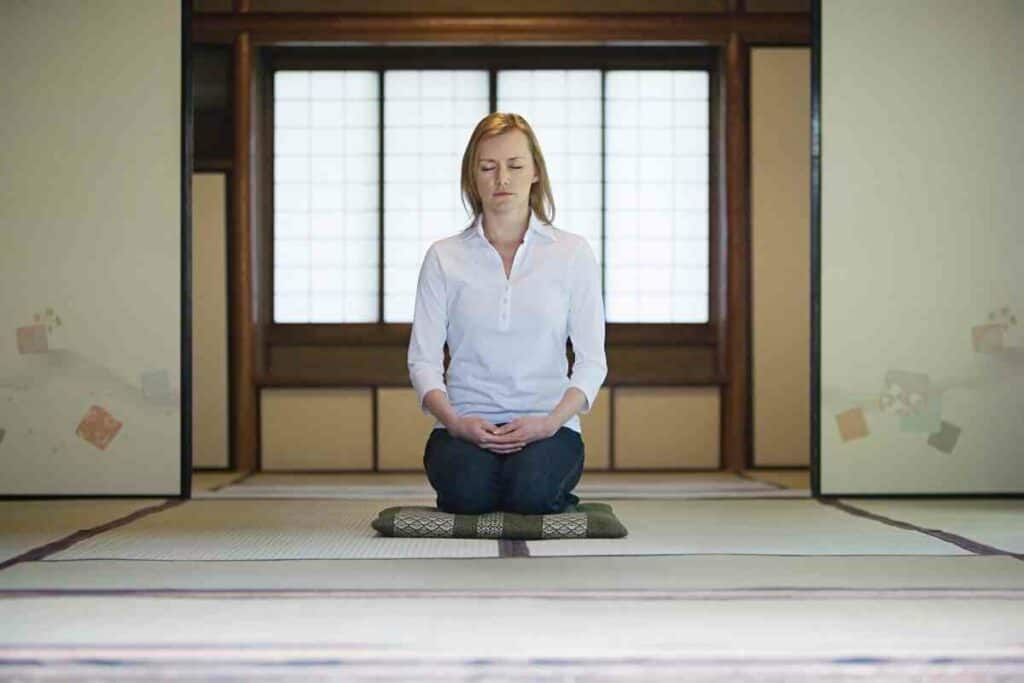
However, the western influence on the pacific Asian countries is now changing how people experience zabutons.
If you don’t want to use the traditional tatami mats, you can still place the zabutons on the floor with a low coffee table for an inviting and chilled atmosphere.
It’s a perfect setup for a family gathering, especially during winter.
You’ll spot this arrangement in many Japanese homes during family gatherings or celebrations.
11. Where are Zabutons Made?
Zabuton is a Japanese artwork that has existed for more than 1,000 years.
Initially, you’d only spot these fancy seating cushions in Japanese homes and some restaurants.
However, with time, Zabuton gained international attention, and you can now find them in pacific Asian countries and far.
Today, you’ll find many factories all over the world are making zabutons.
Although zabutons are handmade cushions that anyone can learn to make, they follow a specific procedure to achieve the desired shape, size, and proper padding.
You’ll find them in many shops, although not all manufacturers will follow the traditional zabuton-making procedure to the latter.
Keep In Mind – So if you’re looking for a masterpiece zabuton that’ll give you complete relaxation and comfortability, you may need to order online from Japanese art and craft stores.
These zabutons follow traditional craftsmanship as makers aim to offer the ultimate experience of a conventional Japanese zabuton.
Wrapping Up
The Zabuton remains one of the most highly cherished artworks originating from Japan.
Unlike many artworks that become part of the Japanese culture after inheritance from neighboring nations like China, the Japanese are proud to be the pioneers of zabutons, which are now available worldwide.
This beautiful art piece might have slightly veered from its original purpose – sitting and meditating, but the legacy lives on, especially among the Japanese.
Many Japanese art and craft stores still stock traditional zabutons made by skilled natives.
In addition, some institutions teach zabuton-making skills up to date to ensure its traditions are passed on to the coming generations.
Today, anyone can order zabutons online and experience their relaxing and comforting feel without visiting Japan.
Read Next
- Best Japanese Knives Top Picks for Every Kitchen
- Japan’s Bold New Trend: Dressing Like a British Gentleman (or at Least Trying)
- 7 Best Japanese Sunscreen Products You Can Buy Online
- 5 Best Japanese Makeup Brushes for a Flawless Finish
- 7 Benefits Of Tatami Mats You Should Know
- The Best Furoshiki Wrapping Cloths: Inspiration, Ideas & Cloths You Can Buy


